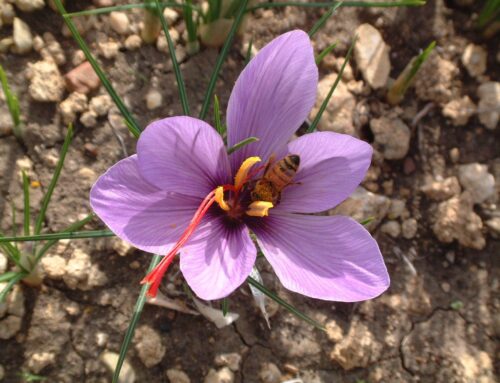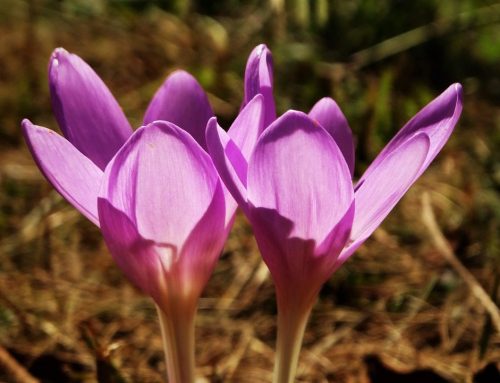What Are the Benefits of Saffron for Health?
Part 1: Scientific Perspective
Most people would search every single issue they encounter in their everyday life, or as it is more common now “google it”. No matter if it is a simple question or a specialized one like what are the benefits of saffron. It is probably the reason you are here reading this article as well.
However, most of the results, even those from great websites, may not be completely true, especially in specialized and scientific subjects which are highly dependent on scientific researches.
That is why we have provided a brief summary of scientific research about the benefits of saffron on human health. We have reviewed a few articles and papers either from Research Gate or NCBIto even Health Line and other websites to gather a reliable resource of information about saffron and its effects to assure you with the best and most valid information about saffron.

An Overview on Saffron, Phytochemicals, and Medicinal Properties
In this article, we are going to give a summary of a published article, “An Overview on Saffron, Phytochemicals, and Medicinal Properties”, written by three medical students of Tehran University,Ahmad Reza Gohari,Soodabeh Saeidnia, andMahdieh Kurepaz Mahmoodabadi.
They have mentioned in the article’s abstract that saffron is the most valuable medicinal food product. The writers have attested that the stigma of the Crocus sativus or as it is most known as saffron Crocus has an important role in pharmaceutics, cosmetics, perfumery, and textile dye-producing industries. Then the article goes on to give a thorough report on the pharmacological effects of saffron. Its growing effect in the pharmacological field is making saffron and saffron-based products even more important. They also count the phytochemistry features of the plant and then mentions the standard methods to evaluate the quality of saffron.
As stated in this article, saffron has been used in traditional medicine as “a sedative, expectorant, anti-asthma, emmenagogue, and adaptogenic agent”. However, the focus of the article is on the proven effects of saffron and here you can find a few saffron benefits which are examined in labs and have been proven.
Pharmacological Benefits of Saffron
While saffron benefits are more, the researchers mention a few pharmacological effects of saffron in this article:
- Saffron is more effective than a placebo. It also has an equivalent effect compared to therapeutic doses of imipramine and fluoxetine in mild-to-moderate depression
- Saffron extracts prevent retinal damages and have a role in the treatment of ischemic retinopathy and age-related macular degeneration
- A decrease in cholesterol and triglyceride levels and reduction in vascular damage were observed when hyperlipidemic rabbits were treated with crocetin
- Reduction in hypoxia at the vascular wall
- An anti-oxidant effect was observed in human platelets together with the inhibition of lipid peroxidation.
Besides the above-mentioned activity, saffron has other benefits as well. Improvement of ethanol-impaired memory, effects on learning behavior and neuronal cell death, and management of psoriasis are other effects of Crocus sativus.

Phytochemistry Features of Saffron
After talking about the benefits of saffron on human health, Gohari et al. explain the phytochemical aspects of saffron. Their research shows that the color of saffron is due to the degraded carotenoid compounds, crocin, and crocetin. Its flavor also comes from the carotenoid oxidation products, mainly safranal. Finally, the bitter taste comes from glucoside picrocrocin for the biogenesis of the color and odor active compounds.
International Standards for Saffron
In this part of the research, Gohari and his co-workers mention the possible ways through which the purity of saffron can be assessed. As a medicinal food product, there are some characteristics that saffron should have according to ISO 3632. One of these characteristics for example is the coloring power; crocin, picrocrocin, and safranal determine it. It led to defining 4 different saffron types which later changed into three types.
By the way, as mentioned in the article, there are circumstances in which saffron may be useless or even harmful. For example, when the filament or powder is mixed with flowers or filaments of other plants like Carthamus tinctorius and Calendula Officinalis. Or when some people sell turmeric (which they call Indian saffron or American saffron) as real saffron.

How to Distinguish High-Quality Saffron
Though fake saffron is harmful, there are many ways through which we can distinguish pure saffron and detect adulterants in saffron products. Here are a few ways to determine the purity of saffron:
When dispersed in water, saffron immediately changes to a characteristic form. Through this form, you can simply distinguish saffron from Crocus stamens, safflower, or arnica. Besides, saffron easily dissolves in the aqueous phase and the special odor of saffron can be sensed.
Moreover, you can draw a rod dipped in sulfuric acid across the surface of the dried water extract of saffron. If the saffron is pure, a blue color appears. The color eventually turns purple or reddish-brown. There are also other methods including color reactions, microscopic study, thin layer chromatography (TLC), and high-performance liquid chromatography (HPLC). Among which, HPLC is the most effective one. The authors also introduce the CIE system which is a useful technique to assess the quality of saffron.
Finally, the authors continue to mention the best time to cultivate saffron stigma, maintenance requirements, drying methods, and so on. Read more at An overview on saffron, phytochemicals, and medicinal properties








